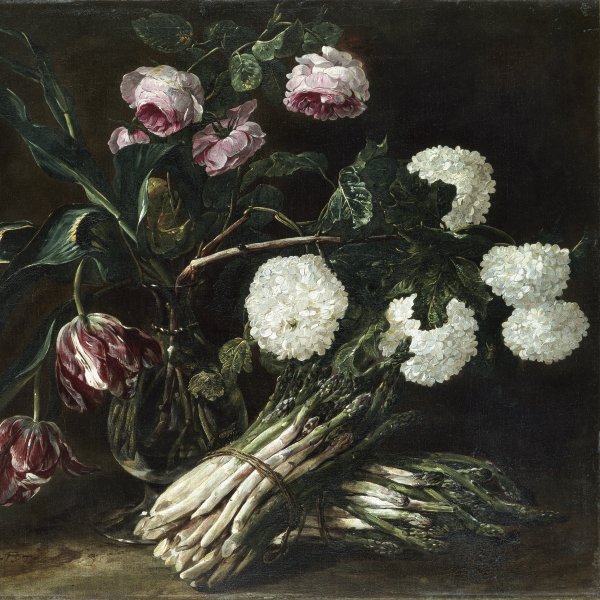Jan Fyt
Jan Fyt, who was born in Antwerp in 1611, is one of the most important 17th-century still-life painters. He began his training from 1620 to 1621 in the studio of Hans van de Berch and then studied with the animal and still-life painter Frans Snyders. Fyt is first registered in the guild of Saint Luke in Antwerp as an independent master in 1629 although he continued to work in Snyders’ studio until 1631. At that point Fyt made a series of trips that took him first to Paris, from 1633 to 1634, then to Italy. In Rome he joined the Schildersbent, the society of northern painters living in the city, where he was nicknamed Goudvink (Goldfinch). According to the art historian Pellegrino Antonio Orlandi in his ABC pittorico of 1704, Fyt lived in Venice where he produced works for the Sagredo and Contarini families. It is thought that he visited Naples, Florence and Genoa, and Orlandi states that he was in Spain and London. Fyt returned to Antwerp in 1641 where he remained for the rest of his life apart from a brief trip around the Northern Provinces. He is frequently mentioned in judicial documents in Antwerp due to the numerous disputes and court cases with other painters and member of his own family in which he was involved, always for financial reasons. In 1640 the artist is registered in the guild of Romanists in Antwerp, a body that only admitted artists who had visited Rome. He was elected its dean in 1652.
Fyt was a highly prolific artist and it is thought that he produced around 280 paintings, many of them signed and dated. Most of his compositions are still lifes with hunting motifs and game but he also executed floral still lifes and compositions with fruit, scenes of animals, fables, domestic fowl and scenes of hunting. He was a celebrated artist in his own lifetime and his works were to be found in the leading collections of the day. Fyt only had two documented pupils: Jeronimus Pinckaert and Jacob van Kerckhoven, although he had numerous followers including Pieter Boel and David de Coninck. He occasionally collaborated with other painters such as Jacob Jordaens, Erasmus Quellinus, Thomas Willeboirts Bosschaert and Cornelis Schut. Fyt’s work was extremely influential for still-life painters in Flanders, Holland and Italy.





